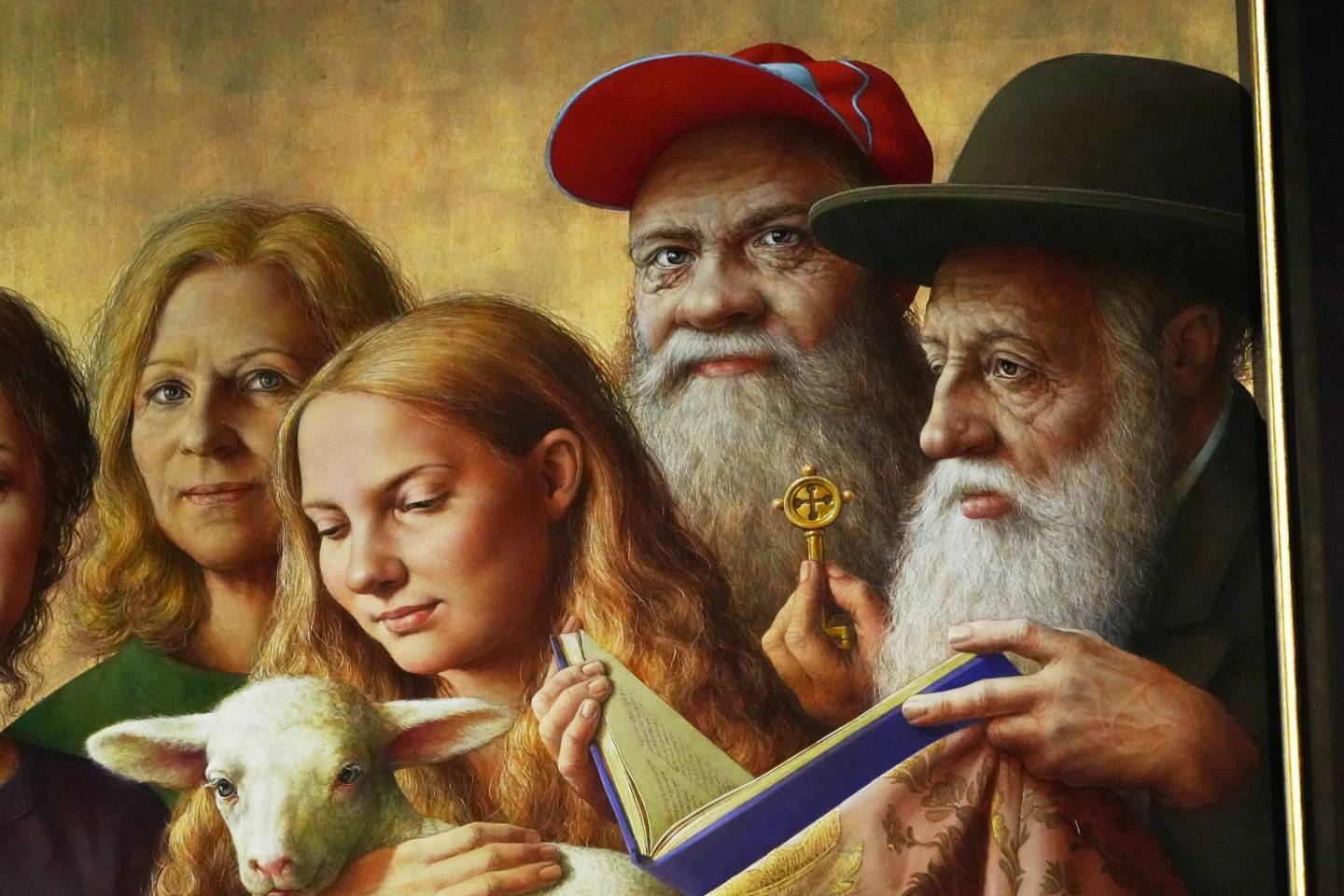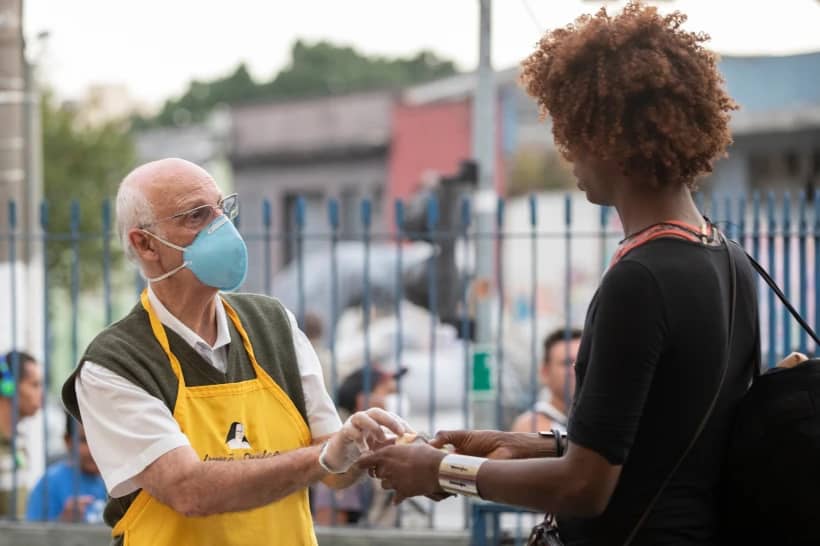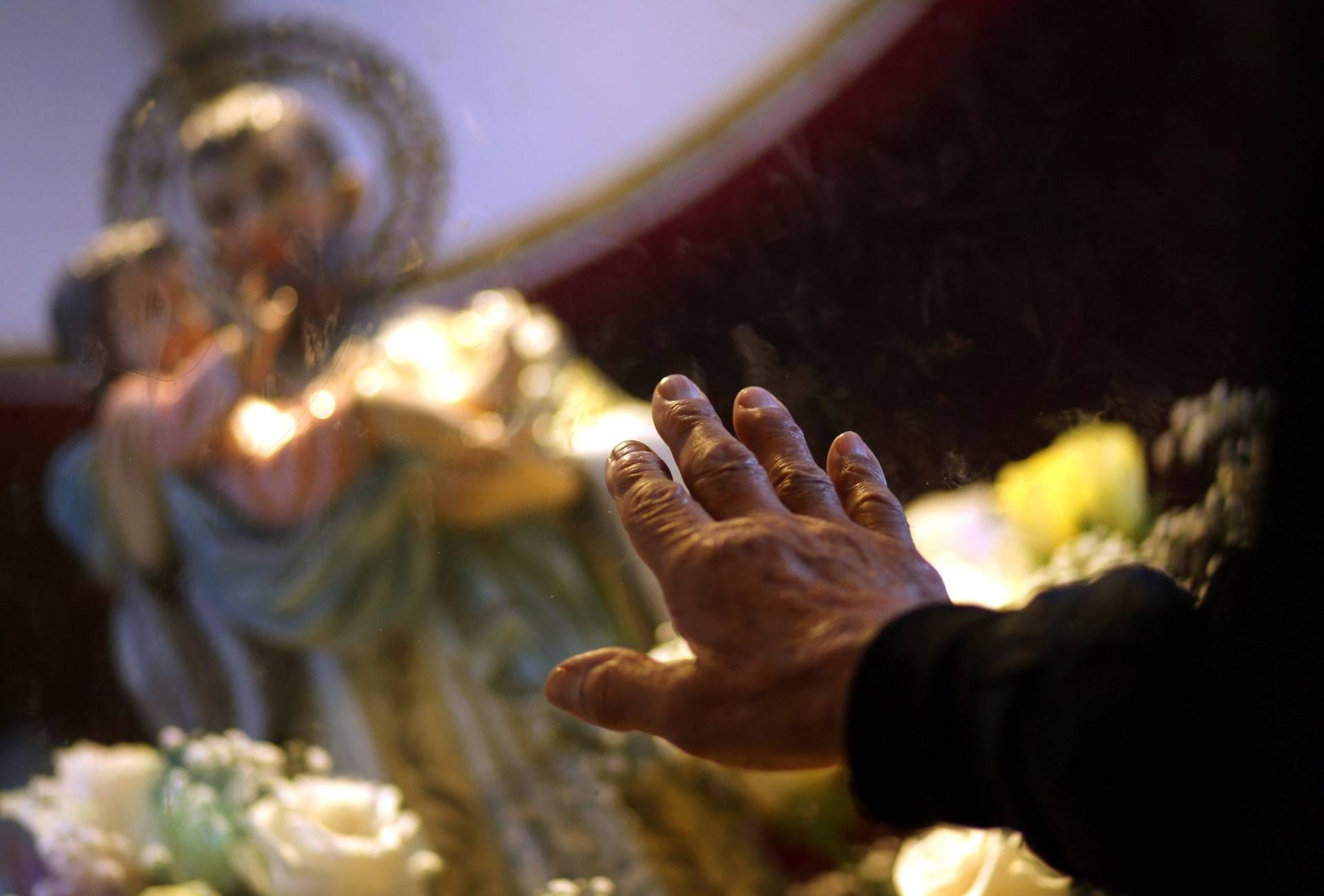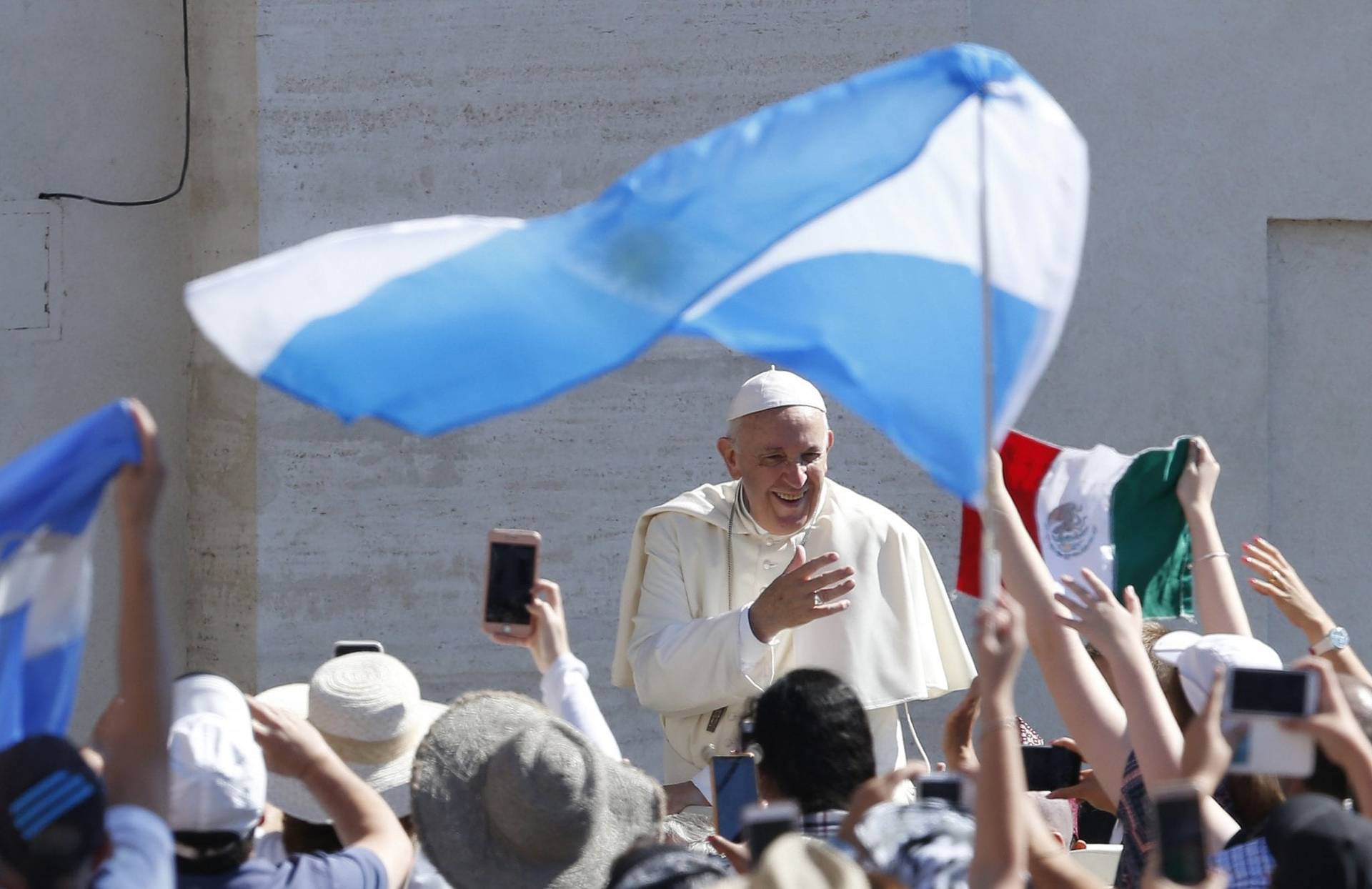BUENOS AIRES, Argentina – Seventeen years ago, a priest at the Church of Santa Maria in Buenos Aires was tidying up when he discovered two small pieces of a Eucharistic host on the altar. Church rules told him exactly what to do in such a situation, and he followed them to the letter – placing the pieces of host in a chalice with water to dissolve, then putting the chalice into a tabernacle.
Such small gestures of respect for the Eucharist are common in Catholic parishes all around the world, but what followed was anything but.
One week later – on May 8, feast of Our Lady of Lujan, patroness of Argentina, Uruguay and Paraguay – the priest checked the chalice. Astonished, he reported that the water had turned a deep red, like the color of blood. An “informal” analysis at the time suggested it was indeed blood, but little more was done to investigate.
That, however, wasn’t the end of the story.
Two years later, a Eucharistic minister distributing Communion during a Mass at Santa Maria claimed to see a drop of blood fall inside a chalice. Two years after that, on the feast of the Assumption, a host that had fallen to the floor during Mass was once again placed in water at Santa Maria, and it too turned into what was believed to be blood.
As the parish’s fame for such happenings grew, Jorge Mario Bergoglio, the Archbishop of Buenos Aires at the time – who today is Pope Francis – asked for tests. A local doctor named Ricardo Castañón took a sample from what had become known by then as the “1992 Sign” and sent it to a lab in San Francisco.
When the results came back, the lab reported the substance “could be” human tissue. Another analysis by a doctor in Sydney, Australia, likewise concluded the substance was human tissue and “could” belong to a heart.
Dissatisfied with “could,” and knowing that Bergoglio expected an answer, Catañón sent the material to a third doctor in New York for what he called a “blind sample.”
This last doctor was more definitive: The substance, he reported, belonged to a heart muscle called the myocardium – more specifically, the left ventricle that pumps oxygenated blood from the lungs to the body. The doctor also found the person the sample came from had suffered greatly, including trauma to the chest.
Told the sample didn’t belong to a living patient, the New York doctor said he found the presence of white blood cells inexplicable, since they usually disintegrate minutes after a blood sample is removed from the body. He also reported the sample had a “beat,” which also had been noted in the first report in 1992.
In light of those findings, Castañón swiftly drew spiritual conclusions: The fact that the substance is from the myocardium, he said, suggests the Eucharist is what “pumps blood into [Christ’s] Church.” It being from the left ventricle, he said, is a reminder that Christ “cleans the Church of its sins.”
“We don’t call it a miracle, we describe it as a ‘sign’,” said Father Alberto Vari, the pastor of Santa Maria.

“The “Eucharist in this parish, in facts and in words, has become the center of community life,” he told Crux Wednesday. “Prayer and adoration are almost permanent: the doors open at 8:00 a.m. and close at 9:00 p.m., and [Christ] is never alone because there’s always someone praying.”
Though there’s some information about the reputed miracles online, mostly in Spanish, there’s little overt publicity. Vari described his interview with Crux as “rare,” but that’s something he wants to change – though, he added, slowly.
Appointed to the parish in March, Vari’s previous experience came at two major shrines of Buenos Aires: San Ramon no Nato and Santa Rosa de Lima, both examples of Argentina’s strong popular religiosity. He wants the “sign” to become better known outside Santa Maria, while at the same time maintaining the parish’s intimacy.
“The Eucharist is for everyone, but it leads to silence, and the community doesn’t want to lose this. If you separate the sign from the Eucharist, from prayer, you risk the parish becoming a highway of people,” he said.
Vari said that at the end of the day, the parish community believes that what happened in Santa Maria was for the world, not just for them.
It’s a realization in part thanks to the pope, who, when he was still in Buenos Aires, was asked his opinion on the happenings at the parish. He replied, “The Lord passed and left his mark [for the world],” which was turned into a song.
Visitors can see the “sign” a handful of times a month as part of a Eucharistic adoration.
The blood from 1994 and 1996 has evaporated, while that of 1992 remains, preserved in a glass case the size of a large collectible coin. It’s regularly kept in the tabernacle behind a receptacle used for adoration. A large blue glass represents Mary’s tunic, a red one the fire of the Holy Spirit. There’s a white one, which imitates a cloth thread and has a very simple flower in yellow, and which actually encases the Eucharist.
The flower is a tonalli, a four-petal flower that’s found in the image of Our Lady of Guadalupe. In the Aztec language, according to Vari, tonalli means “abode of God.”
The decision to keep the “sign” together with the Eucharist at all times, Vari said, is a reminder of what really matters.
“I don’t know if Christ is still present in the sign, but I know he’s present in the Eucharist, that he becomes present at every Mass, and that’s unexplainable enough,” Vari said.
During one of his homilies, Bergoglio described the reputed miracles as “Mary opening a space for us to encounter her son Jesus,” which today is written in one of Santa Maria’s side chapels.
Beyond the primacy of the Eucharist at Santa Maria, service for the poor occupies a strong second place. Twice a week, the church runs a soup kitchen, and no one who comes in asking for clothes, food or help is ever turned away, Vari said.
“When he was dying of tongue cancer, Pascal couldn’t receive Communion so he asked that a poor man be brought to him so that he could embrace Christ,” Vari said. “We have to ask ourselves: ‘Do we see Christ in the Eucharist? And do we see him in those in need?’”
Follow Inés San Martín on Twitter: @inesanma
Crux is dedicated to smart, wired and independent reporting on the Vatican and worldwide Catholic Church. That kind of reporting doesn’t come cheap, and we need your support. You can help Crux by giving a small amount monthly, or with a onetime gift. Please remember, Crux is a for-profit organization, so contributions are not tax-deductible.















